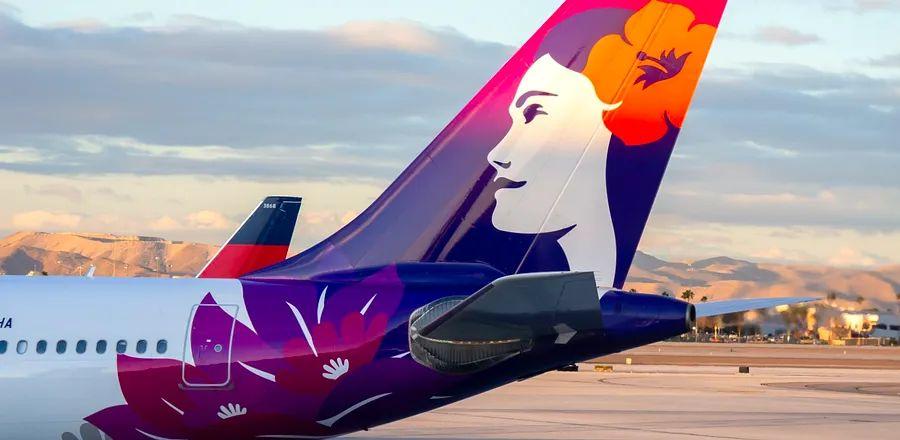Alaska Airlines and Hawaiian Airlines Merge—Implications for Travelers

Over the weekend, Alaska Airlines and Hawaiian Airlines announced a significant agreement: Alaska will acquire Hawaiian for $1.9 billion.
In this proposed merger, both airline brands will continue to operate separately, unlike the previous acquisition of Virgin America, where the brand was eliminated. The airlines promise that this integration will enhance passenger networks, significantly increasing service for Hawai‘i residents by tripling the number of North American destinations accessible from the islands via direct and connecting flights. Additionally, it will enhance service between the West Coast and the Asia Pacific, positioning Honolulu as a crucial hub for international travel.
Regarding loyalty programs, the merger will link Alaska’s and Hawaiian’s frequent flyer systems, providing members access to a broader range of airport lounges worldwide and the chance to earn and redeem miles through the oneworld Alliance—of which Alaska is a partner, while Hawaiian is not. The oneworld Alliance features airlines such as American Airlines, British Airways, Cathay Pacific, Japan Airlines, Qantas, and Qatar Airways, among others.
Nonetheless, the merger must still secure regulatory approval, and it’s uncertain whether the federal government will approve the deal.
Earlier this year, JetBlue Airways terminated its three-year agreement with American Airlines after a federal ruling found the partnership to be anticompetitive. JetBlue announced it would redirect its efforts towards acquiring Spirit Airlines, but the Justice Department has initiated a civil antitrust lawsuit to prevent this acquisition, asserting that “the merger of JetBlue and Spirit would lead to increased fares and fewer options for millions of travelers, particularly affecting those dependent on ultra-low-cost carriers,” according to Attorney General Merrick Garland's statement.
While Spirit's ticket prices are generally much lower than those of competitors like JetBlue, Alaska and Hawaiian airlines have comparable fares. For example, in September, the average one-way economy ticket price from the continental U.S. to Hawai‘i was $321, as reported by Cirium, an aviation analytics firm. Their average one-way economy fares were slightly below this, at $294 for Alaska and $292 for Hawaiian, showing that their prices were nearly identical.
However, this merger would likely diminish competition on flights to the islands. Hawaiian Airlines currently operates the largest share of seats—24 percent—of any U.S. airline flying between the continental U.S. and Hawai‘i. Should it merge with Alaska, which flies 15 percent of the seats on these routes, the combined entity would control 40 percent of the seats available.
Nevertheless, the executives of both airlines argue that the merger will be beneficial for passengers and employees alike.
“This merger marks an exciting new chapter in our shared mission to enhance travel experiences for our guests and broaden choices for travelers between the West Coast and Hawai‘i,” remarked Alaska Airlines CEO Ben Minicucci.
“Thanks to the added scale and resources from this transaction with Alaska Airlines, we can enhance our investments in guest experiences and technology,” stated Peter Ingram, president and CEO of Hawaiian Airlines.
Hawaiian Airlines, a 94-year-old company and one of the largest employers in Hawai‘i, has pledged that the merger will not only maintain but also expand the number of union-represented jobs in the state. This includes safeguarding Hawaiian's pilot, flight attendant, and maintenance operations in Honolulu. The airlines are also dedicated to “promoting regenerative tourism in the Hawaiian Islands and investing in Hawaiian language and culture, continuing and enhancing existing programs.”
Both airlines will continue to prioritize their environmental responsibilities, with Alaska aiming for net-zero emissions by 2040 and ongoing investments in sustainable aviation fuel.
Regarding their fleets, after acquiring Virgin America, Alaska operates a completely Boeing fleet with an average age nearing 16 years (excluding 41 Embraer E175 planes operated by Horizon Air for Alaska), according to Cirium data. Hawaiian Airlines has both Airbus and Boeing aircraft with an average age of about 10 years and has ordered 12 Boeing 787-9 planes. Combined, the two brands will operate a total of 365 narrow- and wide-body aircraft, servicing 138 destinations.
Pending necessary approvals and closing conditions, the merger is anticipated to be completed within the next 12 to 18 months. The merged entity will be headquartered in Seattle, led by Alaska CEO Minicucci.

1

2

3

4

5
Evaluation :
5/5